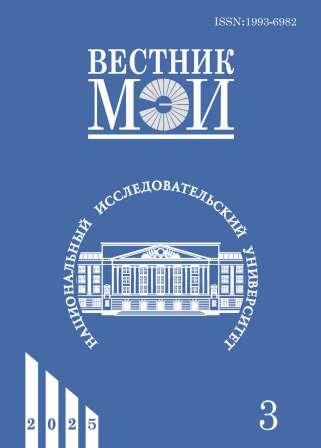Повышение энергоэффективности криогенных насосных агрегатов: сравнительный анализ асинхронного и синхронного реактивного двигателей для транспортировки сжиженного природного газа
Аннотация
Проведен комплексный анализ и расчет характеристик синхронного реактивного (СРД) и асинхронного (АД) двигателей, используемых для привода погружных насосов в системах транспортировки сжиженного природного газа (СПГ). Рассмотрены конструктивные и тепловые аспекты их работы в условиях низких температур, включая тепловыделение, распределение температуры, металлоемкость конструкции и их влияние на технологические потери. Выполненные расчеты с использованием метода конечных элементов (МКЭ) в программном комплексе Motor-CAD подтвердили преимущества СРД по сравнению с АД в криогенных приложениях. СРД демонстрирует более высокий коэффициент полезного действия (КПД), что приводит к снижению технологических потерь за счет уменьшения тепловыделения.
Результаты исследования показали, что применение СРД может существенно снизить испарение перекачиваемой среды, продлить время бездренажного хранения СПГ и уменьшить операционные затраты на объектах хранения и транспортировки. Дополнительно предложены направления для дальнейших исследований, направленные на улучшение характеристик СРД и их адаптацию к условиям изменяющихся нагрузок и температурных режимов.
Литература
2. Mokhatab S., Mak J.Y., Valappil J.V., David A. Handbook of Liquefied Natural Gas. N.-Y.: Elsevier, 2014.
3. Shaton K., Hervik A., Hjelle H.M. The Environmental Footprint of Natural Gas Transportation: LNG vs. Pipeline // Economics of Energy & Environmental Policy. 2020. V. 9(1). Pp. 223—242.
4. Родькин Я.Э., Зайцев А.В., Сулин А.Б. Пути снижения потерь СПГ при транспортировке и хранении // Вестник международной академии холода. 2023. № 4. С. 44—50.
5. Bezdenezhnykh I., Smirnov V., Denisenko V. Advantages of Synchronous Reluctance Motors and Synchronous Motors with Permanent Magnets as Drive of Liquid Natural Gas Submerged Pumps for Process Loss Reduction // Proc. Belarusian-Ural-Siberian Smart Energy Conf. Ekaterinburg, 2023. Pp. 28—32.
6. Mathes K.N. Dielectric Properties of Cryogenic Liquids // IEEE Trans. Electrical Insulation. 1967. V. EI-2. No. 1. Pp. 24—32.
7. Hossam-Eldin A.A. Prospects and Behaviour of Liquid Natural Gas in Cryoequipments // Physica B + C. 1983. V. 119(3). Pp. 279—282.
8. Rush S.D., Lonn H. Tutorial on Cryogenic Submerged Electric Motor Pumps // Proc. Intern. Pump Users Symp. Houston, 2001. Pp. 101—107.
9. Dlugiewicz L. e. a. Electrical Motor for Liquid Gas Pump // Proc. Intern. Symp. Power Electron., Elect. Drives, Autom. Motion. Taormina, 2006. Pp. 311—316.
10. Безденежных И.Н., Денисенко В.И., Смирнов В.М. Влияние тепловыделения асинхронного электродвигателя криогенного погружного насоса на технологические потери объектов производства, хранения и транспортировки сжиженного природного газа // Электротехника, электротехнологии, электротехнические материалы и компоненты: Труды XX Междунар. конф. Поведники, 2024. С. 113—120.
11. Ozcelik N.G., Dogru U.E., Imeryuz M., Ergene L.T. Synchronous Reluctance Motor vs. Induction Motor at Low-power Industrial Applications: Design and Comparison // Energies. 2019. V. 12(11). P. 2190.
12. Кононенко Е.В. Синхронные реактивные машины. М.: Энергия, 1979.
13. Постников И.М., Ралле В.В., Синхронные реактивные машины. Киев: Техника, 1970.
14. Прахт В.А., Дмитриевский В.А., Казакбаев М.В. Синхронный реактивный двигатель без магнитов класса энергоэффективности IE5 // Электротехника. 2019. № 6. С. 40—46.
15. Guo C., Feng Y., Huang S., Wang J. Operational Performance Analysis of the Cryogenic Electrical Machine for Submerged Liquefied Natural Gas Pumps // Frontiers Energy Res. 2022. V. 10. P. 922888.
16. Ferrari S., Pellegrino G. FEAfix: FEA Refinement of Design Equations for Synchronous Reluctance Machines // IEEE Trans. Industry Appl. 2020. V. 56(1). Pp. 256—266.
---
Для цитирования: Безденежных И.Н., Денисенко В.И., Панарин А.Н. Повышение энергоэффективности криогенных насосных агрегатов: сравнительный анализ асинхронного и синхронного реактивного двигателей для транспортировки сжиженного природного газа // Вестник МЭИ. 2025. № 3. С. 24—31. DOI: 10.24160/1993-6982-2025-3-24-31
---
Конфликт интересов: авторы заявляют об отсутствии конфликта интересов
#
1. Kravchenko M.P. Geopolitika Prirodnogo Gaza. Vestnik Moskovskogo Gos. Lingvisticheskogo Un-ta. Seriya «Obshchestvennye Nauki». 2015;2(713):69—77. (in Russian).
2. Mokhatab S., Mak J.Y., Valappil J.V., David A. Handbook of Liquefied Natural Gas. N.-Y.: Elsevier, 2014.
3. Shaton K., Hervik A., Hjelle H.M. The Environmental Footprint of Natural Gas Transportation: LNG vs. Pipeline. Economics of Energy & Environmental Policy. 2020;9(1):223—242.
4. Rod'kin Ya.E., Zaytsev A.V., Sulin A.B. Puti Snizheniya Poter' SPG pri Transportirovke i Khranenii. Vestnik Mezhdunarodnoy Akademii Kholoda. 2023;4:44—50. (in Russian).
5. Bezdenezhnykh I., Smirnov V., Denisenko V. Advantages of Synchronous Reluc-tance Motors and Synchronous Motors with Permanent Magnets as Drive of Liquid Natural Gas Submerged Pumps for Process Loss Reduction. Proc. Belarusian-Ural-Siberian Smart Energy Conf. Ekaterinburg, 2023:28—32.
6. Mathes K.N. Dielectric Properties of Cryogenic Liquids. IEEE Trans. Electrical In-sulation. 1967;EI-2;1:24—32.
7. Hossam-Eldin A.A. Prospects and Behaviour of Liquid Natural Gas in Cryo-equipments. Physica B + C. 1983;119(3):279—282.
8. Rush S.D., Lonn H. Tutorial on Cryogenic Submerged Electric Motor Pumps. Proc. Intern. Pump Users Symp. Houston, 2001:101—107.
9. Dlugiewicz L. e. a. Electrical Motor for Liquid Gas Pump. Proc. Intern. Symp. Pow-er Electron., Elect. Drives, Autom. Motion. Taormina, 2006:311—316.
10. Bezdenezhnykh I.N., Denisenko V.I., Smirnov V.M. Vliyanie Teplovydeleniya Asinkhronnogo Elektrodvigatelya Kriogennogo Pogruzhnogo Nasosa na Tekhnologicheskie Poteri Obektov Proizvodstva, Khraneniya i Transportirovki Szhizhennogo Prirodnogo Gaza. Elektrotekhnika, Elektrotekhnologii, Elektrotekhnicheskie Materialy i Komponenty: Trudy XX Mezhdunar. Konf. Povedniki, 2024:113—120. (in Russian).
11. Ozcelik N.G., Dogru U.E., Imeryuz M., Ergene L.T. Synchronous Reluctance Motor vs. Induction Motor at Low-power Industrial Applications: Design and Comparison. Energies. 2019;12(11):2190.
12. Kononenko E.V. Sinkhronnye Reaktivnye Mashiny. M.: Energiya, 1979. (in Russian).
13. Postnikov I.M., Ralle V.V. Sinkhronnye Reaktivnye Mashiny. Kiev: Tekhnika, 1970. (in Russian).
14. Prakht V.A., Dmitrievskiy V.A., Kazakbaev M.V. Sinkhronnyy Reaktivnyy Dvigatel' bez Magnitov Klassa Energoeffektivnosti IE5. Elektrotekhnika. 2019;6:40—46. (in Russian).
15. Guo C., Feng Y., Huang S., Wang J. Operational Performance Analysis of the Cryogenic Electrical Machine for Submerged Liquefied Natural Gas Pumps. Frontiers Energy Res. 2022;10:922888.
16. Ferrari S., Pellegrino G. FEAfix: FEA Refinement of Design Equations for Synchronous Reluctance Machines. IEEE Trans. Industry Appl. 2020;56(1):256—266
---
For citation: Bezdeneshnykh I.N., Denisenko V.I., Panarin A.N. Improving the Energy Efficiency of Cryogenic Pump Units: a Comparative Analysis of Induction and Synchronous Reluctance Motors for Liquefied Natural Gas Transportation. Bulletin of MPEI. 2025;3:24—31. (in Russian). DOI: 10.24160/1993-6982-2025-3-24-31
---
Conflict of interests: the authors declare no conflict of interest




